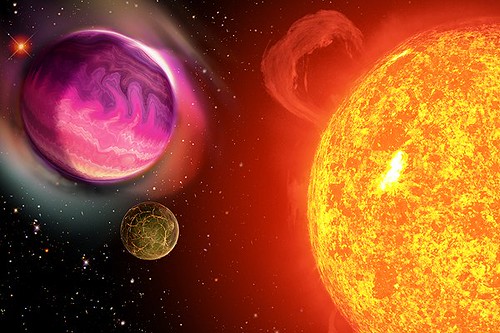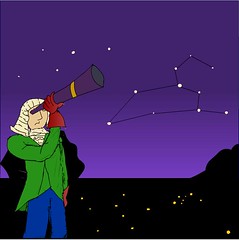The possibility of additional solar systems brings up an interesting possibility: could there be a different astrological system for each one? A completely unique set of “myths” and legends, and patterns of time that link the citizens of those systems to life itself?
You know the planets of our solar system, each a unique world with its own distinctive appearance, size, and chemistry. Mars, with its bitter-cold, rusty red sands; Venus, a fiery world shrouded in thick clouds of sulfuric acid; sideways Uranus and its strange vertical rings. The variety is breathtaking.
Now imagine the variety that must exist in hundreds of solar systems. There may be worlds out there that make Venus seem hospitable and Uranus positively upright. Only 20 years ago, astronomers were unsure whether any such worlds existed beyond our own solar system. Now, they’ve found more than 280 of them, each with its own planetary “personality,” each a fascinating example of what a world can be.
Yet the heyday of planetary discovery is only just beginning. This fall, astronomers will start a massive search for new planets by observing about 11,000 nearby stars over 6 years. This number dwarfs the roughly 3,000 stars that astronomers have searched to date for the presence of planets. Scientists estimate that the NASA-funded project, called MARVELS (Multi-object Apache Point Observatory Radial Velocity Exoplanet Large-area Survey), will find at least 150 new planets—perhaps many more.
“We’re looking in particular for giant planets like Jupiter,” says Jian Ge, principal investigator for MARVELS and an astronomer at the University of Florida in Gainesville. Ge likens big planets to “beacons of a lighthouse” signaling the presence of entire solar systems. “Once we find a big planet around a star, we know that smaller planets could be there, too.”
MARVELS will do much more than just catalogue a few hundred more planets. By surveying the Jupiter-like planets around such a large number of stars, MARVELS aims to give astronomers the data they need to test competing theories for how planetary systems form and evolve.
Image: Artist T. Riecken’s concept of planets orbiting a distant sun-like star.

